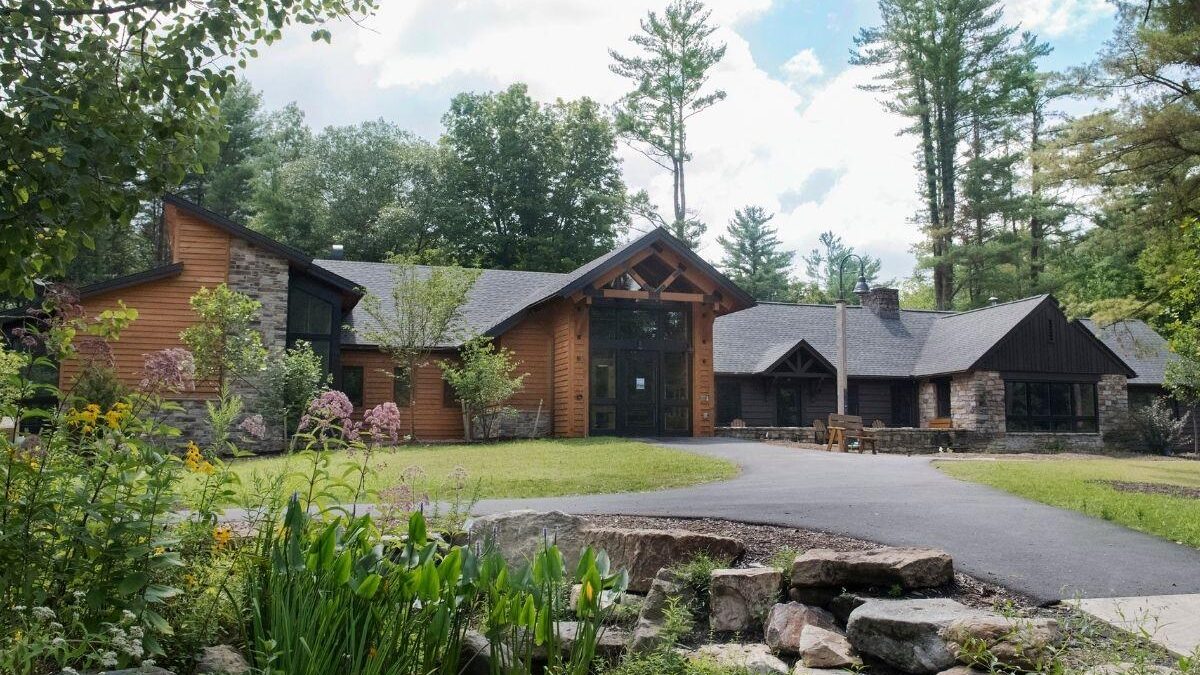
Shaver’s Creek Environmental Center — Penn State’s outdoor education field lab and nature center — has earned LEED certification for sustainability achievement through its recent facility expansion.
Shaver’s Creek’s main visitor center, which includes the Litzinger Herpetarium, Silvi Discovery Room, Weidemann Bookstore and Gift Shop, and Hamer Classroom, earned LEED status. LEED, which stands for Leadership in Energy and Environmental Design, is the most widely used green building rating system in the world and provides a framework for healthy, highly efficient, and cost-saving green buildings, according to the U.S. Green Building Council.
Joshua Potter, associate director of operations and communications at Shaver’s Creek, said the center’s goals were to protect the surrounding environmental habitats; maximize site sustainability and open space; promote best practices for stormwater management and design; and encourage the use of fuel-efficient vehicles and ride sharing for visitors and staff.
“It’s part of our mission — increasing people’s awareness of their impact on the natural word in efforts to promote biodiversity, combat climate change,” he said. “These are important issues in our time, in addition to connecting people to the natural world. It’s a small part of how our choices shape the world around us.”
Shaver’s Creek is located 12 miles from the University Park campus between State College and Huntingdon and is currently open to visitors every day from 10:00 a.m. to 5:00 p.m.
We want to show the community the importance, achievability, and success of conservation efforts in a facility renovation project, and to inspire and empower others to make informed choices about their energy use, water consumption and material sourcing decisions.
Other Shaver’s Creek commitments to achieve LEED certification included:
- Reducing overall average water consumption by 20% by using waterless urinals and low-flow plumbing fixtures. Additionally, 50% of the building’s wastewater will be treated on-site.
- Using variable refrigerant flow mechanical systems to increase the overall energy efficiency of the structures by up to 20% compared to the average structure. This will be aided by a building envelope that exceeds industry standards in performance and technology, primarily through the use of structural insulated panels for the walls and roof. Sections of the existing structure will have previously uninsulated sections brought up to today’s standards for energy design.
- Recycling or salvaging 75% of the construction- and demolition-related waste. This plan will be carried over post-occupancy through Shaver Creek’s own zero-waste recycling and trash policy.
- Reusing resources from the original building when possible. Emphasis was placed on locally available products that consist of a high amount of recycled content, including working with Penn State’s Stone Valley Forest to locally source and harvest 30,000 board feet of finished wood products for the visitor center.
- Utilizing low-emitting materials for all indoor adhesives, sealants, paints, stains, flooring systems, and composite wood products.
- Providing controllable lighting and thermal systems to maximize the comfort and efficiency of visitors and staff.
- Promoting indoor lighting efficiency through the use of LED fixtures and staff access to natural daylighting.
- Incorporating the strategic use of bird-friendly glazing through the facility in order to reduce the number of bird strikes and the resulting casualties that occur when using non-protective glass
Potter said it was important to serve as a sustainability role model through the steps it took to lighten the facility’s impact.
“We want to show the community the importance, achievability, and success of conservation efforts in a facility renovation project, and to inspire and empower others to make informed choices about their energy use, water consumption, and material sourcing decisions,” he said.
